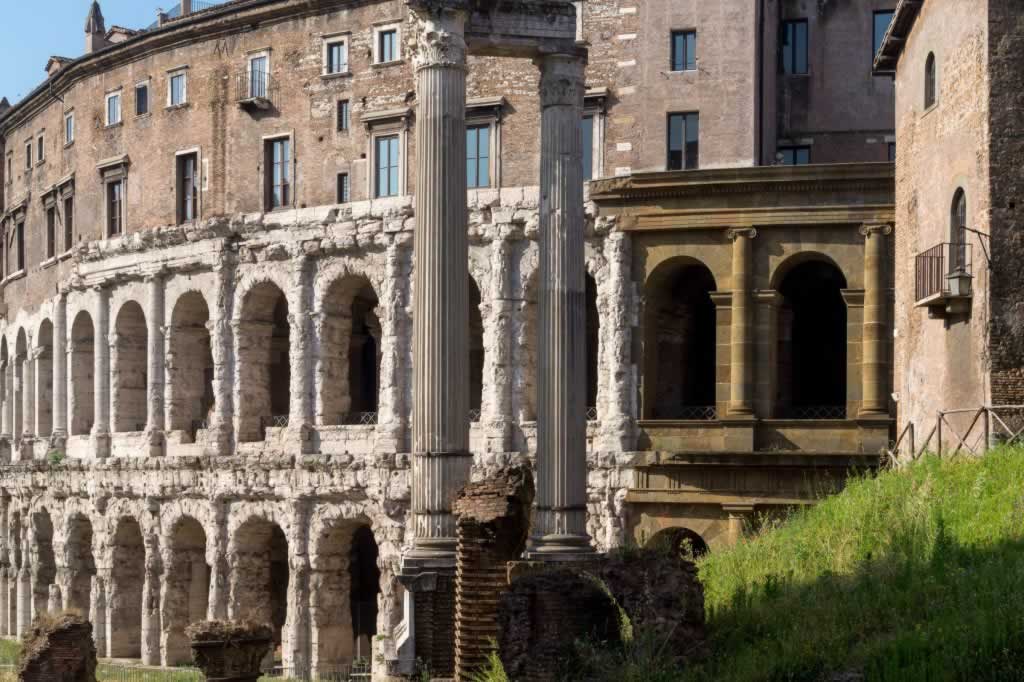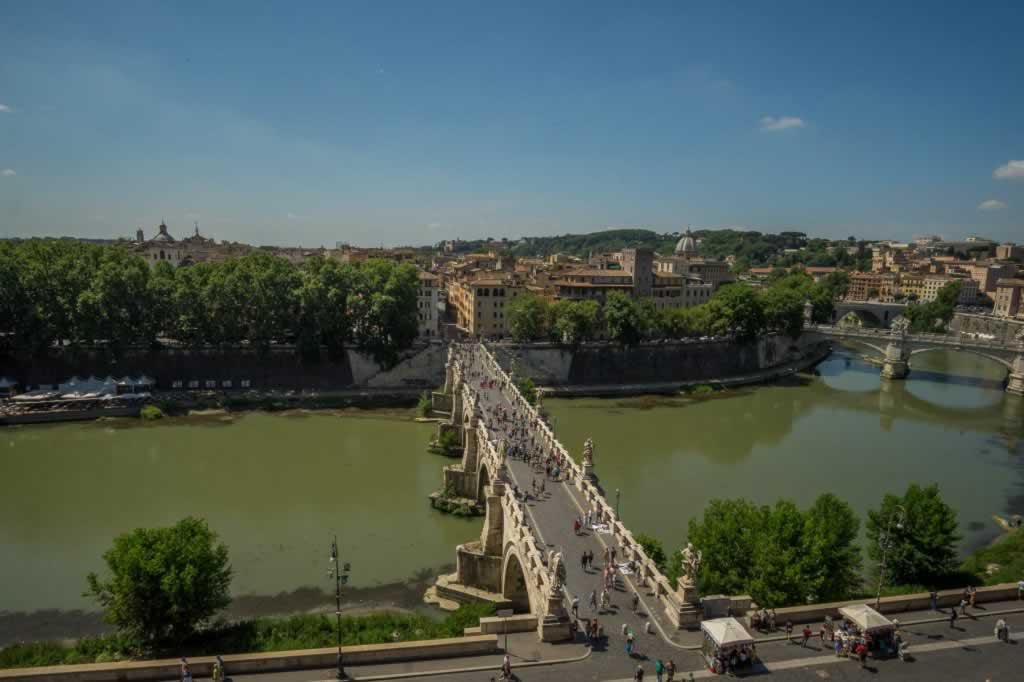Last Updated on: 21st November 2023, 07:30 pm
Here’s a breakdown of the climate, events and travel costs for different seasons to help you decide when to visit the Eternal City.

Main Topics of What Is the Best Time of Year To Go to Rome, Italy?
My Favorite Best Time of Year To Go to Rome
I consider the month of June as being the best time to visit Rome.
Rome in June is warm but not scorching hot. You’ll be able to walk for the most part of the day. Just check out these Rome walking itinerary ideas.
There are tourists, but not as many crowds as during July or August. In June there are more chances for you to take great selfies to post to your social media accounts together with some of these Rome captions.
Hotel prices aren’t the cheapest of the year, yet they are more convenient than the high season hotel rates. Check out my article about accommodation in Rome to find the best hotels in each of these neighborhoods.

Spring in Rome
Spring (March to May) brings mild temperatures and fewer tourists than summer. This can be an excellent time of year to go to Rome if you want pleasant weather in the 60s-70s Fahrenheit range without intense heat or crowds.
In spring, popular sights may still have long lines, but they tend to be shorter than in summer. You’ll get lower hotel rates too compared to peak season. Airfares may start to creep up in May.
Pros of Visiting Rome in Spring:
– Warm sunny days without intense heat or humidity
– Lower hotel rates and airfares than summer
– Fewer tourists than summer, especially in March and April
– Lovely local flowers and trees blooming
– Fun street fests and open-air concerts

High Season: Summer in Rome
Summer (June to August) is considered peak tourist season in Rome, so you’ll encounter long lines at top attractions like the Colosseum and Vatican. Temperatures also swelter in the 80s and 90s. However, summer is a lively time with many cultural events.
Hotel rates and airfares generally hit their peak in summer. If you can handle the heat and crowds, booking well in advance can help secure deals. Early morning and late evening are better times to visit popular sights.
Pros of Visiting Rome in Summer:
– Warm Mediterranean climate ideal for al fresco dining
– Outdoor festivals, concerts and events
– Open-air opera at the Baths of Caracalla
– Evening strolls and people watching
I loved the Baths of Caracalla. Attending an open-air opera in this impressive venue is one good reason for me to visit Rome again, this time during summer.

Autumn in Rome
Autumn (September to November) offers moderate temperatures, fewer tourists, beautiful foliage and delicious seasonal food. With highs in the 60s-70s Fahrenheit, you can comfortably explore the city. Crowds thin after August.
Airfares and hotels drop from their summer peaks, though October still attracts visitors.
September and November tend to have lighter tourist numbers. Autumn’s colorful leaves and romantic, melancholic atmosphere enchant visitors.
Pros of Visiting Rome in Autumn:
– Pleasant weather and minimal rain
– Smaller crowds at top sights
– Stunning fall foliage and colors
– Seasonal produce like mushrooms and chestnuts
– Excellent savings on hotels and flights

Winter in Rome
In winter (December to February), expect chilly 40s to low 50s Fahrenheit and some rain. With fewer travelers, you’ll beat the crowds but some attractions may have reduced hours. Prices are at their lowest for airfare and hotels.
Around Christmas and New Year’s, visitor numbers increase, so booking ahead is essential.Check out the Christmas markets in Rome, as they are usually fun and relaxing.
But January and February are quiet. Pack warm clothes but also lighter layers as indoor places blast the heat.
Pros of Visiting Rome in Winter:
– No waiting in line at top attractions
– Lower hotel, airfare and tour costs
– Atmospheric mist and cool breezes
– Delicious winter cuisine and wine
– Sparkling Christmas lights and decor

Plan Your Perfect Rome Getaway
As you can see, Rome offers plenty to see and do year-round. Before you go put together a to-do list, in order to find out how many days to spend in Rome.
Spring, autumn and winter provide moderate temperatures, fewer crowds and deals on hotels. For excitement, summer has festivals and events despite the heat and peak prices.
Consider your must-see sights, budget and crowd tolerance when planning when to go.
Wherever you stay in Rome, allow time to wander charming neighborhoods, feast on incredible food and drink and soak up la dolce vita.
Rome’s magnificent monuments, piazzas and landscapes await to transport you back through the centuries, any time of year.
Before you go:
Learning how to navigate Rome’s Ciampino Airport is only the first step to an awesome trip to Italy’s capital city. Read my next article to make sure you pick the right accommodation for you, whether you prefer to stay in a hotel or in a private apartment.
Related articles:
- How Many Days in Rome Is Enough?
- Trastevere: Rome’s Coolest Neighborhood
- Rome Walking Tours Self Guided – Sightseeing without the Crowds
- Crypta Balbi – A Glimpse into the Layered Urban Evolution of Rome
- Castel Sant’ Angelo in Rome – Hadrian’s Tomb, Repurposed
- Ostia Beach (Lido di Ostia) | As Close to Rome as It Gets
- Ostia Antica, Best Day Trip from Rome – Why Visit & How To Do It
- Why Visit the Church of San Luigi dei Francesi in Rome
- Ludovisi Battle Sarcophagus – How To Find This Roman Battle Scene and Why Visit?
- Where to See Caravaggio in Rome: Famous Paintings in Churches
- Where to Stay in Rome: A Guide to Neighborhoods and Accommodations
- The Roman Baths of Caracalla – Location, Tickets & Reasons To Visit
- Baths of Diocletian in Rome – Finest Ancient Roman Architecture
- Rome Ciampino Airport: A Complete Guide
- Obelisco Agonale: Ancient Monument in the Heart of Rome’s Piazza Navona
- Obelisco Vaticano
- Gianicolo Hill: Sunset with Panoramic Views of Rome
- Dingli Cliffs: How To Visit Malta’s Highest Point - April 24, 2024
- Blue Grotto Malta - April 23, 2024
- Ramla Beach Gozo, Maybe the Best in Malta - April 9, 2024

